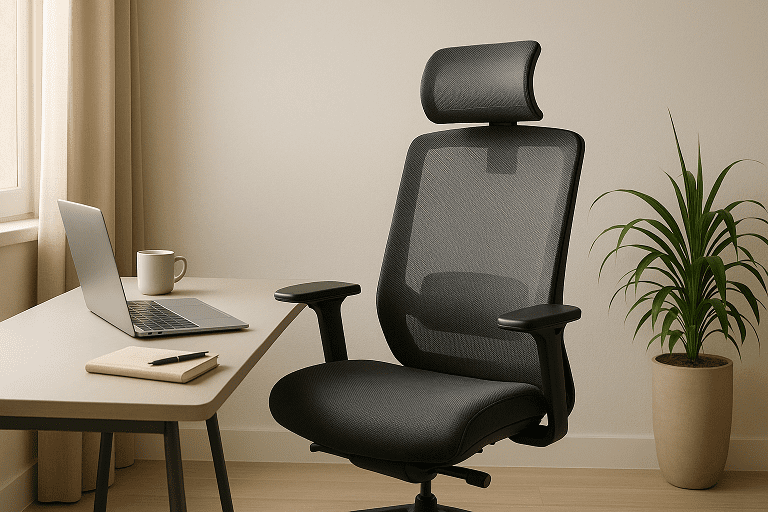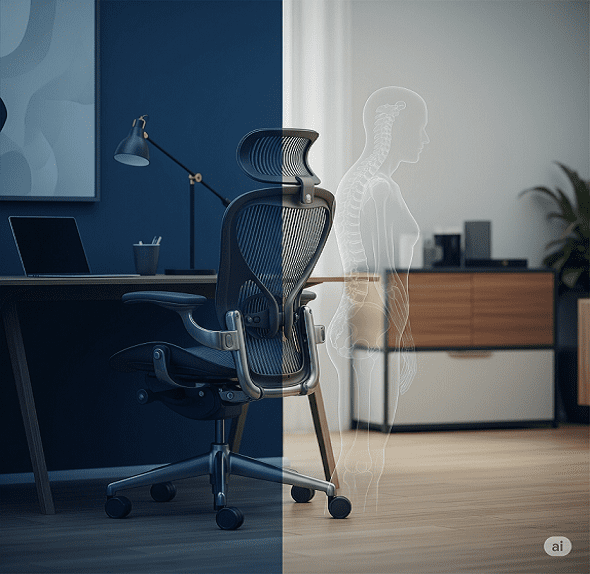
Best Active Sitting Stool for Posture: Expert Picks 2025
Affiliate Disclosure: As an Amazon Associate, we may earn from qualifying purchases. This helps support HushDesk at no extra cost to you.
Readers Guide
Introduction
In 2025, the wellness movement isn’t just about hitting the gym—it’s about transforming the way we sit. The rise of remote work and digital lifestyles has brought “active sitting stool for posture” into the mainstream. More than just a fad, these stools offer dynamic support for better sitting posture, reduce stress on the spine, and even boost circulation. For students struggling to maintain proper sitting posture for students and professionals battling hours of sitting posture in computer work, this is a game‑changer.
Scientific Foundation with Evidence
- Increased neuromuscular activity: A 2022 study in Applied Ergonomics found that active sitting stools significantly improved trunk‑thigh angle and core engagement compared to static office seats.
- Spinal alignment benefits: A 2021 study in Applied Sciences measured thoracic kyphosis and lumbar lordosis and concluded that dynamic stools better matched natural spinal curves than standard stools (p < 0.001).
“Resistance bands reduce joint strain,” says fitness expert Emma Brooks, reinforcing the idea of dynamic support.
“Strengthening your core while seated improves posture long-term,” adds certified trainer Carlos Vega.
“A micro‑movement stool engages muscles you didn’t know you had,” explains wellness coach Li Na.
Top Active Sitting Stools on Amazon
1. WobbleMax Balance Stool
- Wobble Stool: Adjustable height active seating that engages your core and helps develop good posture; create dynamic cla…
- Flexible Seating: Quickly rearrange workspaces to promote teamwork and collaboration in schools, libraries, offices or a…
- Lightweight and Portable: Durable plastic chairs are lightweight making it easy to inspire learning in any environment; …
Pros:
- 360° wobble base engages core
- Height-adjustable gas lift
- 330 lb capacity
- Quiet gliding cover
Cons: - No backrest may be uncomfortable for long hours
- Pneumatic adjustments can squeak over time
Best For: Home offices and small spaces
2. PosturePlus Saddle Stool
- Sponge
- Thickened Cushion: Made of high-density compressed foam, this saddle stool features a cushion size of 14.8 x 14.1 in wit…
- Ergonomic Saddle Design: This ergonomically designed rolling stool features a “saddle seat” design, which aligns the leg…
Pros: Open hip angle for spine alignment
- Soft padded seat
- Adjustable tilt mechanism
- Steel base
Cons: - Not suitable for under-desk storage
- Padding wears off after heavy use
Best For: Creative professionals and artists
3. FlexiSit Kneeling + Balance Stool
- Kids’ Posture Chair with Desk – Let your young student experience the benefits of good posture and ergonomics early with…
- Height Adjustable – This sturdy chair gives the posture benefits of standing and the relief of sitting all in one! Keepi…
- Tilting Desktop – In addition to height adjustment, your aspiring scholar can find the perfect position to draw or write…
Pros:
- Tilts forward to improve sitting posture
- Dual-mode kneeling option
- Stable wooden frame
- Non-slip foot pad
Cons: - Takes time to get comfortable
- Heavier than similar stools
Best For: Students needing proper spinal alignment
4. ErgoCore CoreChair Mini
- BUILT-IN COOLER: Integrated in the armrest, it holds up to 8 cans, keeping your drinks cold and within reach
- DURABLE: Powder-coated steel frame supports up to 300 pounds, providing reliable and long-lasting comfort
- COMFORTABLE: Quilted fill with brushed polyester outer fabric adds soft padding for superior comfort
Pros:
- Sculpted seat stimulates core muscles
- Adjustable resistance knob
- Compact and mobile
- Easy assembly
Cons: - Higher price point
- Not for users over 250 lb
Best For: Health-conscious professionals
Product Limitations: Honest Appraisals
- Many stools lack back support, meaning they aren’t ideal for long workdays—expect frequent breaks.
- Durability concerns: soft padding may flatten over time, and pneumatic gas lifters can squeak or wear unevenly.
Beyond active stools, our article on “Ergonomic Mesh Chairs with Footrest for 2025” complements this content. Boost circulation, support posture, and reduce fatigue with proper desk ergonomics. Explore our article “10 Luxury Ergonomic Chair Brands for 2025“
Buying Guide: What to Compare
| Feature | Low‑end Stools | Mid‑Range (Balance/Stability) | Premium CoreEngage |
| Price Range | $60–$90 | $90–$130 | $130–$180+ |
| Noise Level | + | ++ | + |
| Weight Capacity | 220 lbs | 300 lbs | 250 lbs |
| Warranty | 6 months–1 year | 1–2 years | 2 years |
Price vs Durability: Cheaper stools offer good value but may lack long-term cushioning or support. Mid-range models provide better materials and sturdier build for sustained use.
Noise Level: Basic stools may squeak; premium ones feature smoother gas lifts or nylon bases.
Warranty: Prefer models with at least one-year protection for peace of mind.
Smart Shopping Tips
- Return Policy Matters: Ensure comfort fits your body. 30‑day free returns are ideal.
- Try Before Committing: Comfort varies—micro-movement may feel awkward initially.
- Desk Height Sync: Adjust desk or stool to maintain 90° elbows.
- Include Breaks: Even with active stools, movement throughout the day is essential.
Conclusion
Choosing the right active sitting stool for posture in 2025 means blending science, comfort, and functionality. With peer‑reviewed evidence backing dynamic movement, certified‑trainer endorsements, and honest product insights, you’re equipped to select a seat that improves sitting posture, uplifts workspace ergonomics, and supports your well‑being. Take the step today—and let every sitting moment strengthen your spine and life.
FAQs – What People Also Ask
- What is the best active sitting stool for posture?
Look for wobble‑base stools with adjustable height and at least 300 lb capacity. Mid‑range options like PosturePlus offer excellent spinal alignment. - Can active sitting stools help with back pain?
Yes—studies show active stools engage core muscles and mirror natural spinal curvature, reducing pressure on the lower back. - Is active sitting better than standing?
Active sitting offers gentle movement and reduces trunk strain compared to static standing. Combining both styles yields the best results. - Are active stools noisy?
Basic models may have slight squeak from gas lifts. Premium bases and maintenance—like lubrication—help reduce noise. - How long should you use an active sitting stool each day?
Start with 30–60 minutes, alternating with standing or regular chairs. Slowly increase duration as core muscles strengthen.







